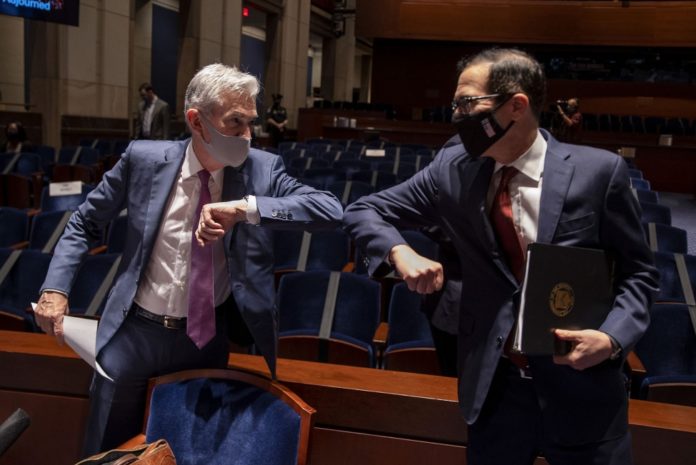Stocks are trading sideways this morning as investors digest the latest batch of congressional testimony. The Dow is down, while the S&P and Nasdaq Composite are flat.
Earlier today, Fed Chairman Jerome Powell and Treasury Secretary Steven Mnuchin testified before the House Financial Services Committee. Representative Maxine Waters (D-CA), who currently serves as the committee’s head, asked a series of questions following remarks from Powell and Mnuchin on the state of the economy.
The committee was most imminently concerned with the extension of additional loans to small businesses. Waters floated the idea of reducing the Main Street lending facility’s minimum loan requirement, which sits at $250,000. Previously, the minimum was $1 million.
Powell responded by arguing that the demand for business loans less totaling than $1 million was very small, and moreover, trying to underwrite loans worth less than $250,000 would be extremely difficult as hundreds of thousands of businesses would apply.
Instead, Powell said that simply providing additional PPP grants might be the wiser – and easier – choice. And unlike Main Street loans, businesses aren’t expected to pay back the PPP funds – something else that’s keeping many small businesses on the sidelines, as business owners don’t want to take on additional debt.
Treasury Secretary Mnuchin agreed that moving forward, more focus should be placed on getting cash to small businesses as a major part of future relief packages. Both Powell and Mnuchin also said that another stimulus bill would help the ongoing U.S. economic recovery immensely.
In other words, two of the country’s most important influences on the dollar unanimously want to emphasize no-strings-attached grants, and not loans that would eventually be paid back, with the next disbursement of government funds.
That means more free money for small businesses. Even the ones that don’t necessarily need it, as well as those that are no longer financially viable.
In addition, Powell and Mnuchin said that the “hardest hit” parts of the economy – the hospitality and restaurant industries, among others – require an extra dose of stimulus to keep them on track for a recovery.
Nothing either men said came as much of a surprise to investors. But their testimony did confirm that the plan to keep things as dovish as possible remains mostly unchanged.
The only difference is that more cash could go toward PPP grants than initially expected.
In the end, that should result in a further weakening of the U.S. dollar. It’s something analysts have long said would result from the unprecedented cash injections into the economy, all while the national debt continues to climb.
The next challenge will concern the raising of rates down the road. The national debt is already $26 trillion, up considerably over the last decade. When the Fed eventually raises rates, the U.S. government would likely be forced to use almost all its tax dollars to pay for the interest on that debt alone, forgoing the funding of other important services, including the military.
Short-term, the government’s plan should result in a rising stock market. Precious metals could continue climbing as well.
But long-term, the Fed’s fix is a more of a fiscal “band-aid” than anything else, and it won’t be able to completely heal the gaping wound left by the Covid-19 lockdowns. Eventually, the economy will pay a toll for the historic monetary easing it’s enjoyed over the last few months.
For the time being, however, conditions are likely to improve. Provided that Powell and Mnuchin keep kicking the can down the road indefinitely.








